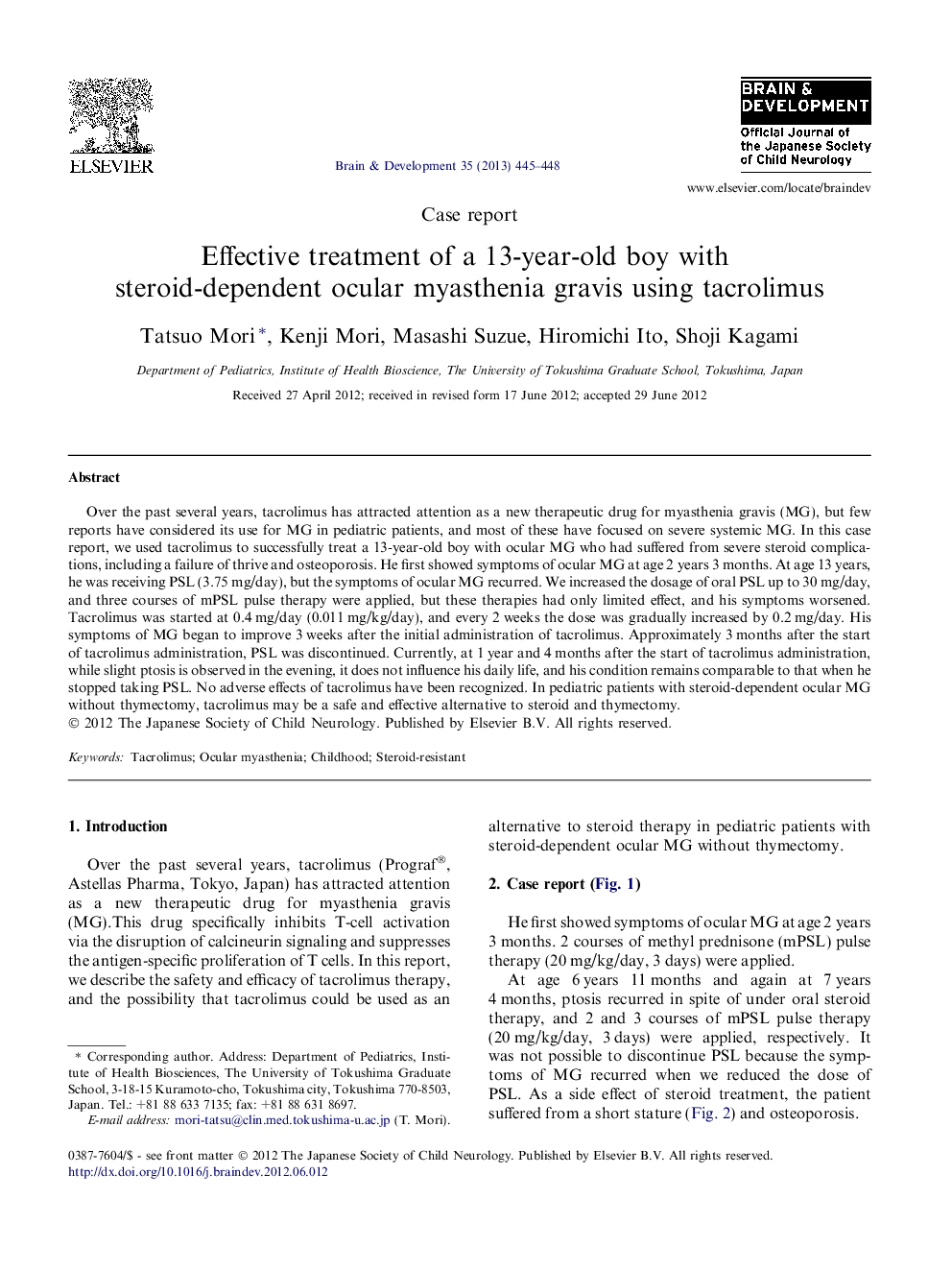| Article ID | Journal | Published Year | Pages | File Type |
|---|---|---|---|---|
| 3037084 | Brain and Development | 2013 | 4 Pages |
Over the past several years, tacrolimus has attracted attention as a new therapeutic drug for myasthenia gravis (MG), but few reports have considered its use for MG in pediatric patients, and most of these have focused on severe systemic MG. In this case report, we used tacrolimus to successfully treat a 13-year-old boy with ocular MG who had suffered from severe steroid complications, including a failure of thrive and osteoporosis. He first showed symptoms of ocular MG at age 2 years 3 months. At age 13 years, he was receiving PSL (3.75 mg/day), but the symptoms of ocular MG recurred. We increased the dosage of oral PSL up to 30 mg/day, and three courses of mPSL pulse therapy were applied, but these therapies had only limited effect, and his symptoms worsened. Tacrolimus was started at 0.4 mg/day (0.011 mg/kg/day), and every 2 weeks the dose was gradually increased by 0.2 mg/day. His symptoms of MG began to improve 3 weeks after the initial administration of tacrolimus. Approximately 3 months after the start of tacrolimus administration, PSL was discontinued. Currently, at 1 year and 4 months after the start of tacrolimus administration, while slight ptosis is observed in the evening, it does not influence his daily life, and his condition remains comparable to that when he stopped taking PSL. No adverse effects of tacrolimus have been recognized. In pediatric patients with steroid-dependent ocular MG without thymectomy, tacrolimus may be a safe and effective alternative to steroid and thymectomy.
